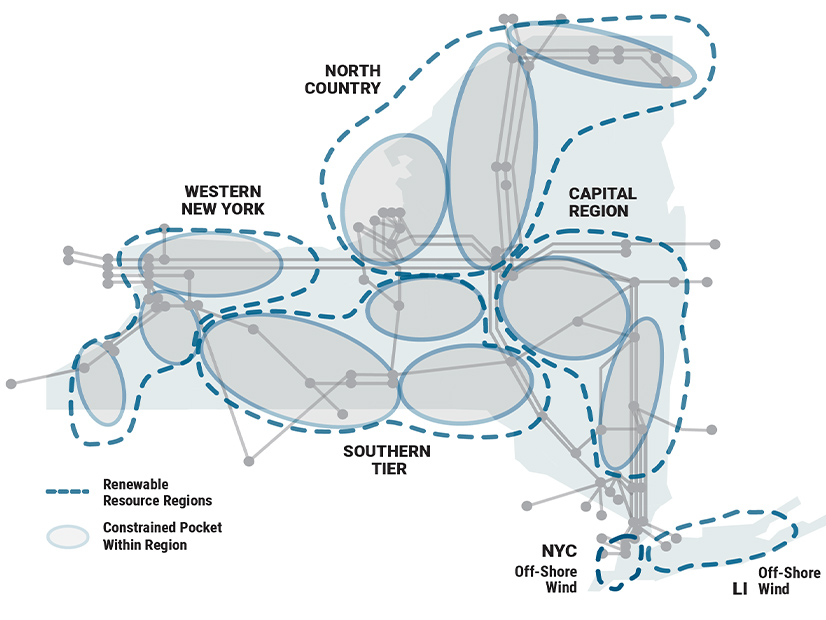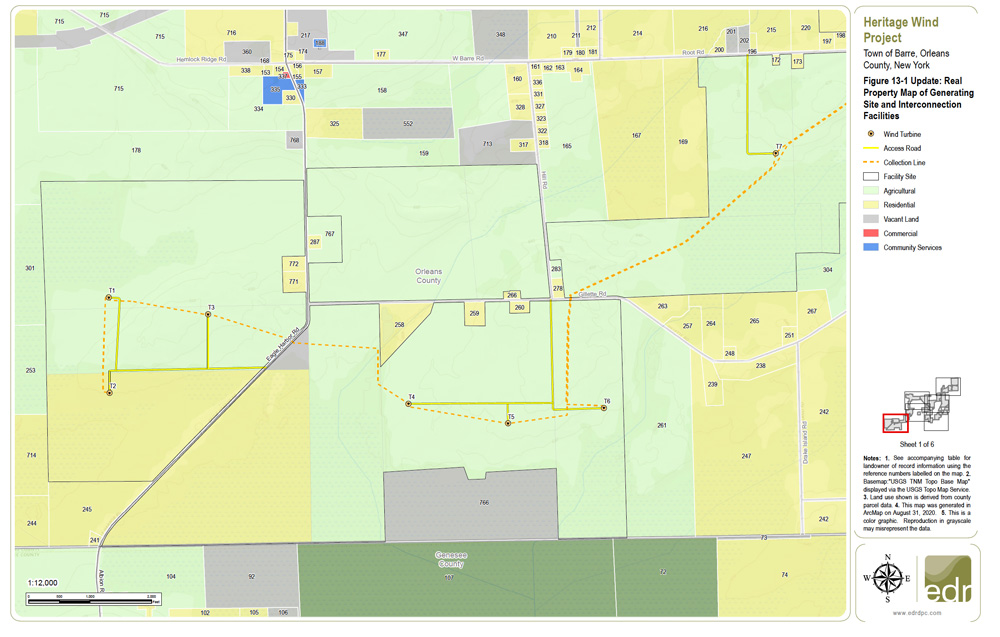
Residents opposed to the Heritage Wind project planned for western New York spoke before the Public Service Commission on Thursday, citing human health concerns, danger to migratory birds in nearby game refuges and a lack of transmission capacity (22-E-0204 and 16-F-0546).
The developers “maintain that there will be no change in property value in our area. We would have six of the wind turbines almost 600 feet tall within 1 mile of our home and the fact that they tried to maintain that there would be no effect on our property value or anyone else’s property value in this area I think is considerably a falsehood,” Iva McKenna — a resident of Barre, where the project is to be located — told the PSC.
While only five people spoke at the hearing, all against the project, the initial proceeding drew 452 written comments, which were overwhelmingly opposed to the project, though about two-thirds of the total was form letters.
Only three of the 17 written comments submitted for the public hearing were in support. Austin Kuntz, union representative for Rochester-based Laborers’ Local 435, said the project will bring hundreds of prevailing-wage jobs to local residents, provide them and their families with health care benefits and a suitable retirement, and fund schools, public services and infrastructure without the need to raise local taxes.

The Office of Renewable Energy Siting (ORES) in January granted a construction permit for the project in Barre, between Rochester and Niagara Falls, contingent on securing a certificate of public convenience and necessity from the PSC. The project is owned by Virginia-based Apex Clean Energy, which manages 2 GW of renewable energy.
Barre resident Adrienne Daniels commented on July 1 that her seizure disorder “very likely will be further affected by the towers’ flicker effects. … The proposed heights of the towers are ludicrous. It has to cause problems with airspace for the small airport nearby, bird populations, migration routes, etc. An eagle has nested on my property; I strongly doubt we’ll have any other large birds establishing nests in this area.”
With 4,607 gravel truck trips projected, resident Georgette Stockman said that if “they plan to use Route 77, will the movement of equipment and components pass the new Western New York Veterans Cemetery, where two people have already lost their lives trying to negotiate their way onto Route 77? Will the equipment go through the Iroquois Wildlife Refuge and disturb the very nature of a refuge?”
Barre resident George McKenna reiterated his written concerns that the $198 million to be paid by NYSERDA for the project was “a wash” and that it would take at least 20 years to get that sum back in electrical energy value.
He also said Barre citizens have never had their opinions or concerns listened to.
“Surveys have shown approximately 70% of the population in opposition, and when the town board was in the process of changing the town’s wind ordinance to accommodate Heritage Wind, 87% of the population was opposed,” McKenna said.
Resident Kerri Richardson spoke of the inability of the transmission system to deliver increasing amounts of upstate renewables to downstate consumers and how that situation jeopardizes achieving the state’s public policy goals.
“The NYISO 2019 Power Trends report identifies that it is not actually in the public interest or public need to move forward with this project in particular,” Richardson said. Quoting from the report, she said, ‘Even with the Western New York and AC transmission projects already selected by the NYISO, congestion on the system will persist, complicating the state’s ability to meet its renewable energy goals.’”
In its January 2019 award of renewable energy credit (REC) contracts, the New York Energy Research and Development Authority (NYSERDA) noted that it was supporting 20 large-scale renewable projects, including Heritage, and that 93% of the awarded capacity would be located upstate (in zones A-E), where clean energy resources are already abundant and access to load centers in southeastern New York is heavily constrained, bottled in so-called generation pockets.
In its 2022 Power Trends report issued last month, NYISO projected that “transmission constraints in these pockets will likely result in curtailment of 11% of the total potential renewable energy production across New York, with curtailment levels in some individual pockets as high as 63%. As more renewables are added to the bulk electric system without additional transmission expansion, greater congestion and curtailment levels will occur.”

